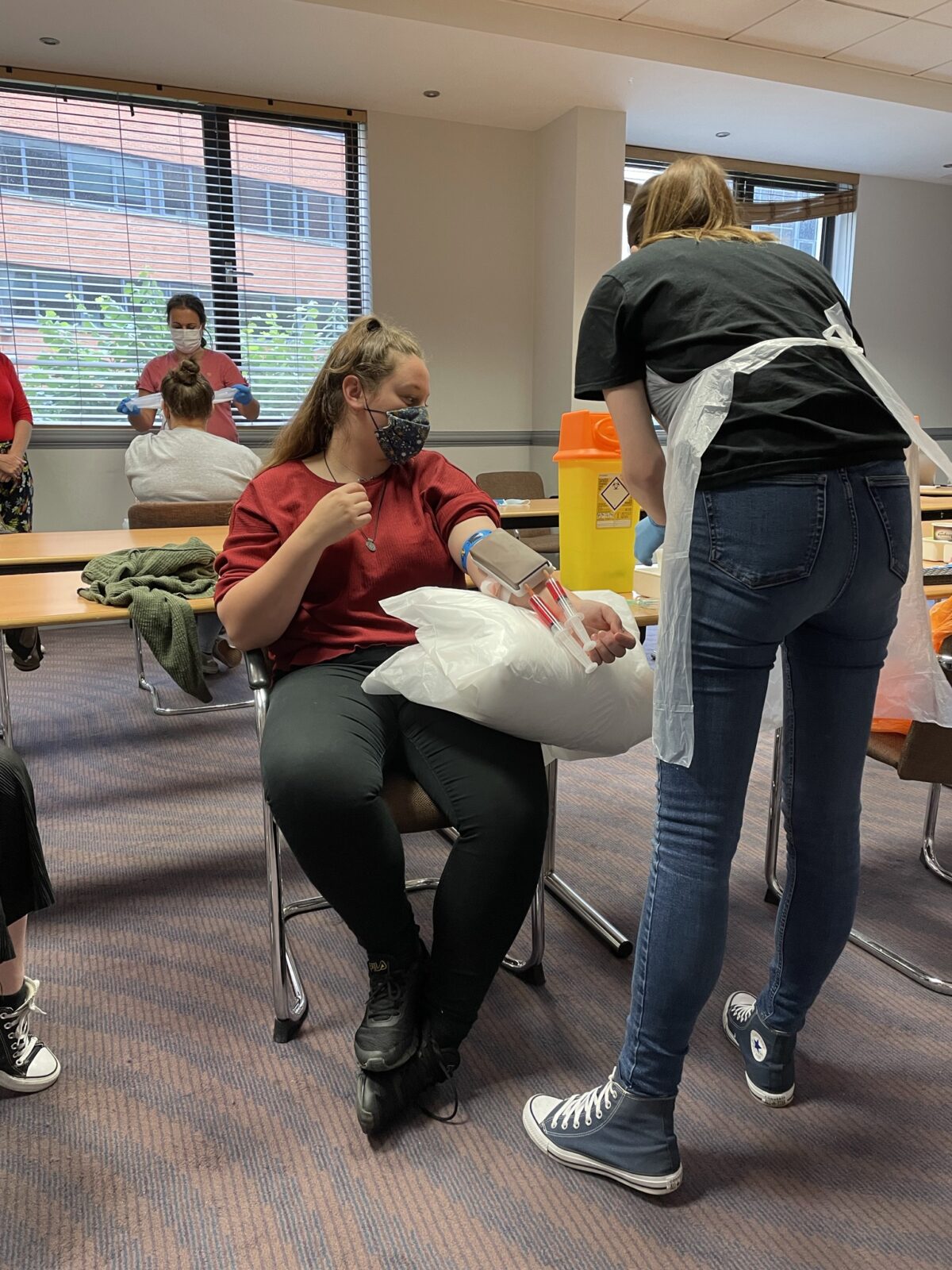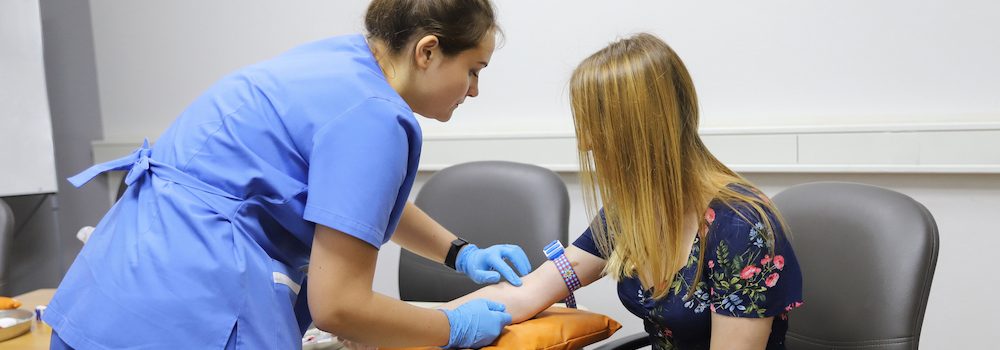Northeast Medical Institute - New Haven Campus Phlebotomy Course & Cna Class Can Be Fun For Everyone
Table of ContentsFacts About Northeast Medical Institute - New Haven Campus Phlebotomy Course & Cna Class RevealedNortheast Medical Institute - New Haven Campus Phlebotomy Course & Cna Class for DummiesNortheast Medical Institute - New Haven Campus Phlebotomy Course & Cna Class - An OverviewFacts About Northeast Medical Institute - New Haven Campus Phlebotomy Course & Cna Class RevealedAll about Northeast Medical Institute - New Haven Campus Phlebotomy Course & Cna ClassNortheast Medical Institute - New Haven Campus Phlebotomy Course & Cna Class - The Facts
The use of such tools should be come with by other infection prevention and control practices, and training in their use.For setups with reduced sources, cost is a motoring aspect in purchase of safety-engineered gadgets. Where safety-engineered tools are not offered, skilled use of a needle and syringe is acceptable.
One of the crucial pens of top quality of care in phlebotomy is the involvement and teamwork of the client; this is equally helpful to both the wellness employee and the person. Clear information either composed or spoken ought to be readily available to each person that goes through phlebotomy. Annex F provides example message for describing the blood-sampling procedure to a client. labelling); transport problems; analysis of results for professional administration. In an outpatient department or clinic, provide a dedicated phlebotomy work area containing: a tidy surface area with 2 chairs (one for the phlebotomist and the various other for the person); a hand clean container with soap, running water and paper towels; alcohol hand rub. In the blood-sampling room for an outpatient division or center, offer a comfortable reclining couch with an arm rest.
More About Northeast Medical Institute - New Haven Campus Phlebotomy Course & Cna Class
Make certain that the indications for blood sampling are clearly specified, either in a created protocol or in documented instructions (e.g. in a research laboratory type). At all times, comply with the strategies for infection avoidance and control listed in Table 2.2. Infection prevention and control methods. Accumulate all the devices required for the procedure and place it within secure and simple reach on a tray or trolley, ensuring that all the products are plainly noticeable.
Present yourself to the client, and ask the patient to specify their full name. Examine that the research laboratory kind matches the individual's identification (i.e. match the person's details with the lab type, to guarantee exact identification).
Make the individual comfortable in a supine placement (if possible). The individual has a right to reject a test at any type of time prior to the blood tasting, so it is essential to ensure that the individual has recognized the treatment - CNA Courses.
An Unbiased View of Northeast Medical Institute - New Haven Campus Phlebotomy Course & Cna Class
Expand the person's arm and evaluate the antecubital fossa or forearm. Situate a blood vessel of a great size that is visible, straight and clear. The diagram in Area 2.3, shows common settings of the vessels, but many variations are feasible. The mean cubital capillary lies in between muscular tissues and is generally the most simple to penetrate.
DO NOT place the needle where capillaries are drawing away, due to the fact that this raises the opportunity of a haematoma. The capillary needs to be noticeable without using the tourniquet. Situating the blood vessel will certainly assist in figuring out the right dimension of needle. Apply the tourniquet regarding 45 finger widths above the venepuncture site and re-examine the capillary.
Haemolysis, contamination and visibility of intravenous liquid and medicine can all alter the outcomes (39. Nursing staff and physicians may access main venous lines for samplings complying with protocols. Samplings from main lines carry a danger of contamination or erroneous research laboratory test outcomes. It is acceptable, but not excellent, to draw blood samplings when very first presenting an in-dwelling venous gadget, before attaching the cannula to the intravenous fluids.
The Ultimate Guide To Northeast Medical Institute - New Haven Campus Phlebotomy Course & Cna Class
Enable the location to completely dry. Failure to enable adequate get in touch with time increases the risk of contamination. DO NOT touch the cleaned up website; specifically, DO NOT position a finger over visit this page the vein to guide the shaft of the exposed needle. It the site is touched, repeat the sanitation. Perform venepuncture as follows.
Ask the client to develop a clenched fist so the blood vessels are a lot more prominent. Go into the blood vessel promptly at a 30 degree angle or less, and remain to introduce the needle along the vein at the most convenient angle of access - CNA Classes. When sufficient blood has been accumulated, release the tourniquet prior to withdrawing the needle
Fascination About Northeast Medical Institute - New Haven Campus Phlebotomy Course & Cna Class
Take out the needle carefully and use gentle stress to the site with a tidy gauze or dry cotton-wool sphere. Ask the client to hold the gauze or cotton wool in area, with the arm prolonged and increased. Ask the patient NOT to bend the arm, because doing so creates a haematoma.

More About Northeast Medical Institute - New Haven Campus Phlebotomy Course & Cna Class
Do not push the syringe bettor due to the fact that added stress boosts the danger of haemolysis. Where feasible, maintain televisions in a shelf and relocate the rack towards you. Infuse downwards into the ideal coloured stopper. DO NOT remove the stopper because it will launch the vacuum. If the example tube does not have a rubber stopper, inject very gradually right into the tube as reducing the stress and speed used to move the specimen minimizes the threat of haemolysis.
